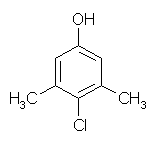AloeGuard antimicrobial soap contains a high-quality soap base and chloroxylenol 0.5 percent (PCMX), a proven broad-spectrum antimicrobial effective against methicillin-resistant Staphylococcus aureus (MRSA), gram-positive and gram-negative bacteria, yeasts, and fungi. It is formulated with aloe vera, which soothes damaged skin and promotes healing, cocomide DEA (a coconut oil derivative), and a neutral pH to protect skin's natural balance. AloeGuard's unique formula helps rehydrate skin, leaving it clean, fresh, and soft.
Hardy Diagnostics
Circle 167 or visit
www.rsleads.com/210ml-167
COPYRIGHT 2002 Nelson Publishing
COPYRIGHT 2003 Gale Group



